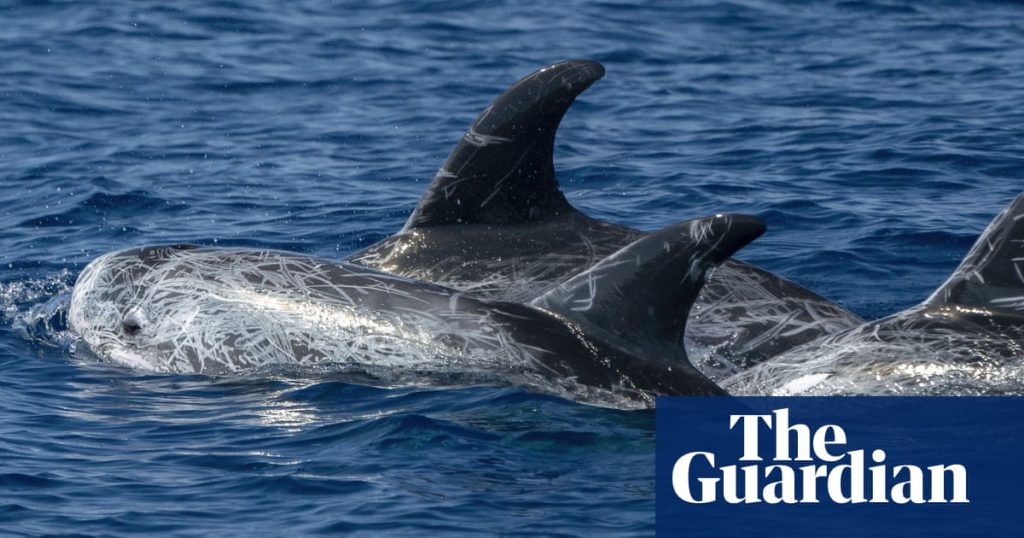
Eventide, and calm waters were slowly departing the warm sands of a small bay in Ynys Môn. The dark igneous rocks that bound the bay had retained some midsummer heat, providing a comfortable vantage point to enjoy the sunset. In the shallows, a lone spectator watched the deep pink of the sea. My eyes followed hers and landed on two grey seals, their heads implanted in the iridescent waters. They watched, we watched, then they lazily slipped below, hardly a ripple raised.
Enter the Risso’s dolphins. A pod of four surfaced stage left, injecting the scene with breathtaking energy; their stout, torpedo-shaped, pale grey bodies surging forth, tall dark dorsal fins ripping the limpid sea apart. One after another, they breached clear of the water, their power and scale full blown, heightened by the intimacy of the bay. A thrilling display – but also, scientifically, a purposeful, non-verbal signal of their intrinsic fitness to potential mates and competitors. In midsummer, Risso’s migrate from the pelagic deeps into the relatively shallow shelf waters of the Celtic Sea, perhaps providing more opportunities for social interactions.
Within moments it seemed the pod had motored beyond the compass of the bay, leaving its waters calm again. You might care to imagine, however, to what degree those leaps of nature perturbed the ocean, and briefly brought additional wavelets to the shore, swashing the sand in pearly, tingly froth and the sound of shell upon shell. Dolphin energy bathing the spectator’s feet and sounding the maritime air with echoes of sea creatures.
The spectator and I wandered home across the dunes. In the half light, the parabolas of marram grass loomed large. In the slacks, a midsummer night’s dream: thousands of marsh helleborines, their pale pink and cream blooms waxing in the waning light, their frilly lips as light as tissue. Research has demonstrated that helleborine flowers attract diurnal pollinators – solitary wasps, bumblebees, hoverflies – in part due to aromatics in their nectar, such as vanillin. But few if any researchers appear to have wandered these dunes at night in search of nocturnal pollinators such as moths – they should; it might help unlock some of the remaining mysteries of pollination.







